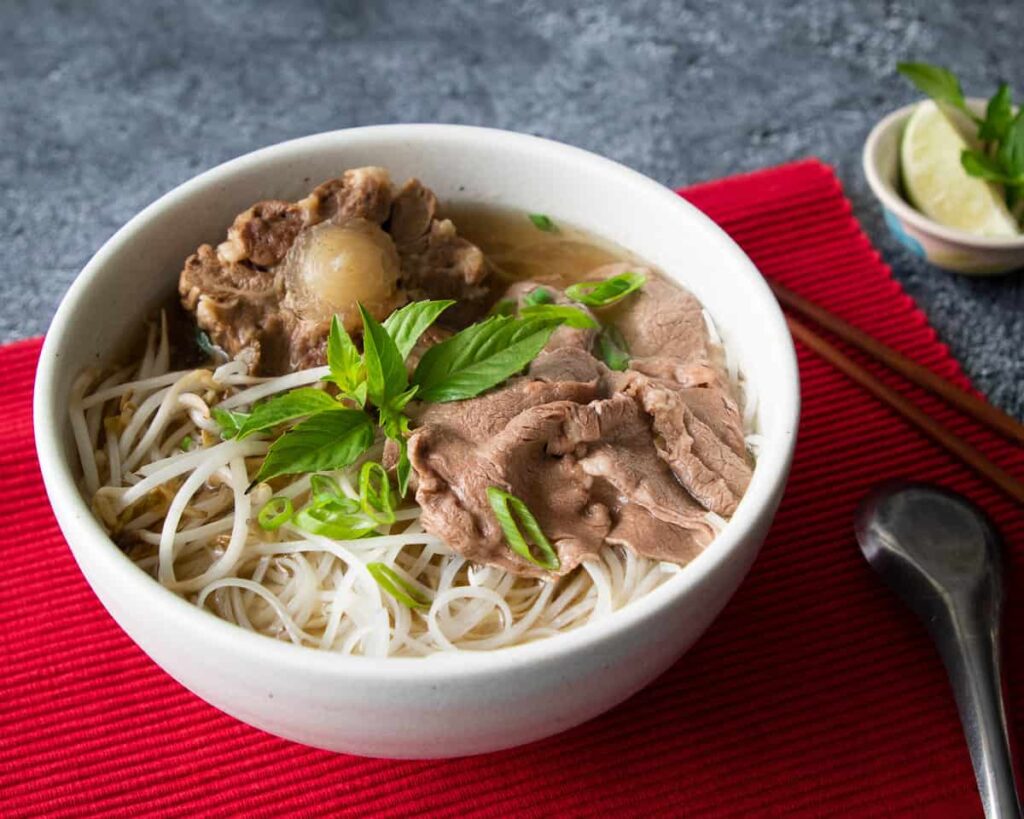If you’ve ever slurped up a bowl of Vietnamese pho, you know it’s not just soup; it’s a steamy, aromatic experience. Getting that rich flavor and perfect balance is a culinary dance that many aspire to master.
So, how do you step up your pho game? Let’s dive deep into the world of pho mastery with three insider techniques that will have you cooking up the best pho in town!
The Foundation: Broth Basics
Every great pho starts with a mesmerizing broth. Think of it as the heart of the dish. You want it to be rich, clear, and bursting with flavor. The first secret to mastering this broth is in choosing quality ingredients.
Go for a mix of beef bones, especially marrow bones and knuckles. Why? They add depth and richness, which is the holy grail of pho!
Roasting Bones: The Flavor Boost
Here’s where the magic happens. Before you even think of boiling, roast those bones! That’s right, throw them in a hot oven for about 30-45 minutes until they’re nice and brown. This step isn’t just for looks; it caramelizes the natural sugars in the bones.

What does this mean for your broth? A deeper, richer flavor that will make your pho stand out. Trust me, skipping this step is like trying to cook pasta without boiling water—it just won’t cut it!
Spices Matter: A Perfect Blend
Once you’ve roasted those bones, it’s time to add spices. Traditional pho spices include star anise, cloves, cinnamon, and coriander seeds. Not just for aesthetics, these spices infuse your broth with an aromatic essence that’s simply unforgettable.
Here’s a pro tip: lightly toast your spices before adding them to your broth. This will unlock their full potential, creating a fragrance that will have everyone asking, “What’s cooking?”
Noodle Nuances: Choosing and Preparing Rice Noodles
Got the broth down? Fantastic! Next up is the noodles. Rice noodles are the backbone of pho, and getting them just right can make or break your dish. The first step is to choose the right thickness; for broth-based pho, flat rice noodles are a must.
But don’t just plop them in cold water—soak them in hot water until they soften up perfectly. This is where you want to pay attention; if you over-soak them, you’ll end up with mushy noodles.
Timing is Key
When it comes to cooking your noodles, timing is everything. A common mistake is cooking them too long. Ideally, you want them to be soft but still have a bit of a bite, known as ‘aldente.’
The general rule? Cook them for about 30-60 seconds in boiling water right before serving. Keep that pot close; it’s all about speed and efficiency. Just imagine a ballerina gracefully pirouetting to the finish line—smooth and swift!
Garnishes Make the Difference
Now, let’s talk about what really spices things up: garnishes! Fresh herbs, bean sprouts, lime wedges, and jalapeños play a pivotal role in finishing your pho. But don’t treat these as mere add-ons; they’re co-stars! A handful of fresh basil and mint adds brightness, while a squeeze of lime elevates the flavors.
You want your buildup of flavors to be so good that each spoonful tells a story. How cool is that?
Balancing Flavors
Finally, remember that balance is key. The broth should be savory; the noodles should be chewy, and the garnishes should offer fresh and spicy notes. It’s all about creating harmony. Give your pho that extra zing by adjusting the seasonings right before serving.
Fish sauce? Yes, please! Hoisin sauce or sriracha? Definitely! Just be sure to taste-test along the way. It’s like orchestrating a symphony; you’ll know it’s perfect when it resonates with your soul.
Conclusion
Mastering pho might seem like an uphill battle, but with these three insider techniques, you’re on your way to crafting the perfect bowl.
From an aromatic broth to beautifully prepared noodles and vibrant garnishes, every step is essential.
So, roll up those sleeves and dive into the delicious world of Vietnamese pho. You won’t just be making dinner; you’ll be creating a comforting hug in a bowl!
FAQs
1. Can I use chicken instead of beef for pho?
Absolutely! Chicken pho is a lighter option and still incredibly delicious. Just follow the same steps but use chicken bones and meat.
2. How long can I store leftover pho broth?
You can store pho broth in the fridge for about 3-4 days or freeze it for several months. Just make sure it’s sealed properly!
3. What can I substitute for rice noodles?
If you can’t find rice noodles, you can use other alternatives like soba noodles or even zucchini noodles if you want a low-carb option!
4. Why is my pho broth cloudy?
Cloudiness often comes from boiling the bones too long or not skimming off the impurities. Start with cold water, bring to a boil, and then reduce the heat while skimming impurities regularly.
5. How spicy can I make my pho?
The spice level is totally up to you! Add fresh chilies to your bowl or a drizzle of sriracha for some heat. Just be careful—too much spice can overpower the delicate flavors of your broth!

